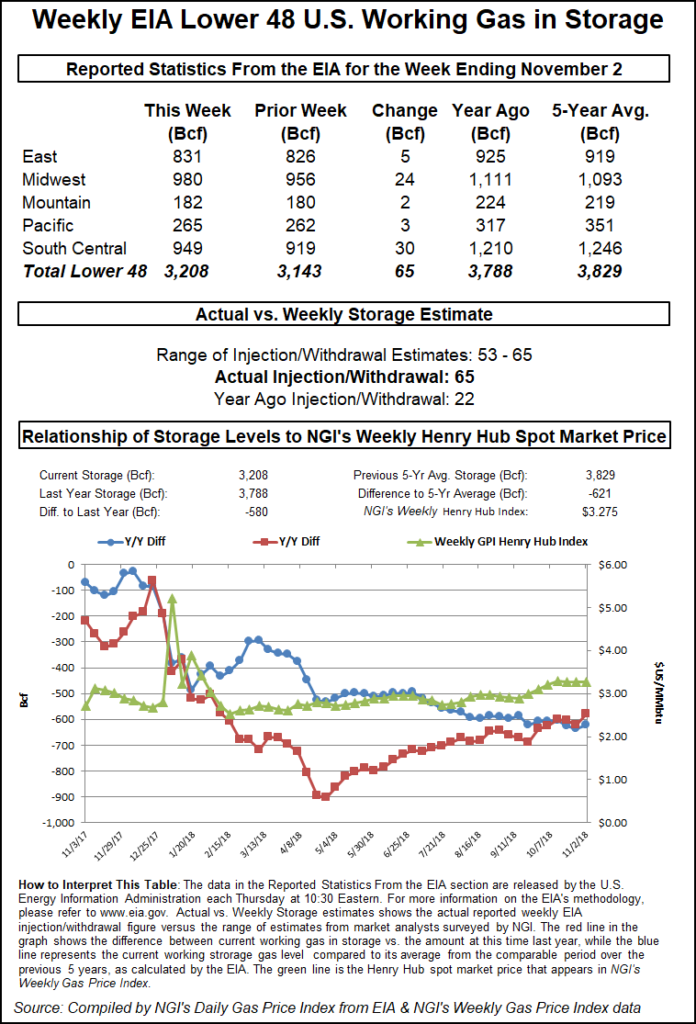EIA Storage Build Surprises High; Natural Gas Futures Reaction Muted Amid Focus on Forecasts
The Energy Information Administration (EIA) reported a 65 Bcf injection in its weekly U.S. natural gas storage report Thursday, surprising to the high side of most estimates on the strength of a hefty gain in South Central inventories.

The 65 Bcf net build for the week ended Nov. 2 compares to a 22 Bcf build recorded in the year-ago period and a five-year average injection of 48 Bcf. The injection — well above many estimates and nearly outside the range of major surveys — shrinks deficits more than expected as the market prepares for the season’s first serious stretch of winter heating demand.
With so much focus on cold temperatures forecast for this week and next, what the plump build showed about last week’s supply/demand balance did not appear to dramatically alter the market’s overall outlook, at least not at first.
As the final number went live at 10:30 a.m. ET, December Nymex futures dropped a few cents to trade as low as $3.506 before recovering to around $3.520-3.530 over the next 10-15 minutes. By 11 a.m. ET, December was trading around $3.520, down about 3.5 cents from Wednesday’s settle.
Prior to the report, major surveys showed market participants looking for a build in the upper 50s Bcf. Intercontinental Exchange EIA financial weekly index futures had settled Wednesday at 59 Bcf.
Bespoke Weather Services said the build does suggest the market is “slightly looser than many expected. However, it fits very well into our current reading of balance, as power burns have loosened significantly and production skyrocketed last week even as Canadian imports fell off” and liquefied natural gas exports were elevated.
“Moving forward, this does not change our view of the natural gas market much at all; a $3.45 test remains in the cards on any warmer model trends this afternoon into tomorrow, as the market is not particularly tight,” Bespoke said. “But to break $3.45 we will need to max long-range warmth in a way that we are not yet confident in. Still, this print confirms downside risks on warm models.”
Total Lower 48 working gas in underground storage stood at 3,208 Bcf as of Nov. 2, down 580 Bcf (15.3%) from last year and 621 Bcf (16.2%) below the five-year average, according to EIA.
By region, the South Central recorded the largest injection for the week at 30 Bcf, including 19 Bcf injected into salt and 10 Bcf into nonsalt. Midwest operators refilled 24 Bcf for the week, while 5 Bcf was injected in the East. The Mountain region saw a 2 Bcf injection, while 3 Bcf was injected in the Pacific, according to EIA.
© 2024 Natural Gas Intelligence. All rights reserved.
ISSN © 1532-1231 | ISSN © 2577-9877 |
